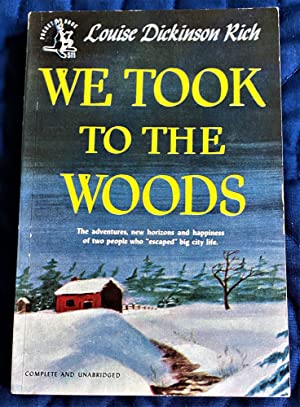Look for Masterpiece Theater Sunday Night
Us by David Nicholls was a surprise favorite read a few years ago. You can read my full review HERE.
Douglas and Connie, a British couple have planned a vacation through Europe, but it’s nearly called off when Connie wakes up and says “I think I want to leave you.”
Douglas forges ahead and cajoles his wife to enjoy one last hurrah with their teenage son, who is soon off to college. And thus begins a bittersweet and awkward journey through Europe.
These are real and familiar characters; especially the befuddled Douglas, certain he can fix something unfixable if only he applied enough logic, pragmatism, and unfailing optimism. Everything that can go wrong on a trip – does. I found Us, the novel, both funny and touching.
This Sunday, PBS Masterpiece is starting a series based on the novel and the preview looks promising. I have it marked to watch. The scenery alone will be worth it for me, as I’m starved for Europe. Maybe you’ll want to watch as well. Masterpiece Theater, Sunday night 9PM (USA).
Anxious People by Fredrik Backman
I was delighted by A Man Called Ove, both the book and the film. Since then, I’ve tried some of Mr. Backman’s other books but none were nearly as good. So I opened Anxious People with a bit of dread — please be good, please be good I muttered to myself. (Don’t you talk to your books? I do, as few else listen.)
Now, you should know it has taken me forever to write up my thoughts of this widely popular and best-selling novel.
You see, I had trouble with Anxious People, yet enjoyed much of it. The plot is crazy, but the characters are wonderfully flawed and complex. It leaps all over the place in time, and yet comes together in the end — so I have no clear opinion on this book. I’ll do my best to give you an overview and let you decide whether to try this wacky tale.
From the book’s publicity:
Looking at real estate isn’t usually a life-or-death situation, but an apartment open house becomes just that when a failed bank robber bursts in and takes a group of strangers hostage. The captives include a recently retired couple who relentlessly hunt down fixer-uppers to avoid the painful truth that they can’t fix their own marriage. There’s a wealthy bank director who has been too busy to care about anyone else and a young couple who are about to have their first child but can’t seem to agree on anything, from where they want to live to how they met in the first place. Add to the mix an eighty-seven-year-old woman who has lived long enough not to be afraid of someone waving a gun in her face, a flustered but still-ready-to-make-a-deal real estate agent, and a mystery man who has locked himself in the apartment’s only bathroom, and you’ve got the worst group of hostages in the world.
The police aren’t having a good day either. Father and son officers, Jim the old hand and Jack preferring modern methods, make up most of the small police force in their small town. They’re not used to bank robbers or handling hostage situations.
_____________________________________________
Anxious People immediately plunges the reader into this preposterous event told from multiple points of view. This makes for a complex start, and at first, everyone and everything was disjointed. There are many characters — each with their own stories.
During the first 100 pages, I wondered where this story was going — and if I would continue reading — but soon it started to come together. The somewhat stereotypical characters soon emerge as much more. These characters, although wonderfully developed, are for the most part idiots — but amusing idiots.
And here’s what Mr. Backman says about idiots — this definition applies to pretty much all of us —
“This story is about a lot of things, but mostly about idiots. So it needs saying from the outset that it’s always very easy to declare that other people are idiots, but only if you forget how idiotically difficult being human is.”
Anxious People jumps around in the timeline and swerves off on a lot of tangents, but it all makes sense in the end and all those little tangents soon become important. It was at times funny, at times sad, but for me, the best part was how it handled difficult topics in a way that was deservedly serious and yet lighthearted.
I found it was worth working through some of the convolution just for the some of the wisdom alone. I’ll give you a few samples of Mr. Backman’s insights:
“Because the terrible thing about becoming an adult is being forced to realize that absolutely nobody cares about us, we have to deal with everything ourselves now, find out how the whole world works. Work and pay bills, use dental floss and get to meetings on time, stand in line and fill out forms, come to grips with cables and put furniture together, change tires on the car and charge the phone and switch the coffee machine off and not forget to sign the kids up for swimming lessons. We open our eyes in the morning and life is just waiting to tip a fresh avalanche of “Don’t Forget!”s and “Remember!”s over us. We don’t have time to think or breathe, we just wake up and start digging through the heap, because there will be another one dumped on us tomorrow. We look around occasionally, at our place of work or at parents’ meetings or out in the street, and realize with horror that everyone else seems to know exactly what they’re doing. We’re the only ones who have to pretend. Everyone else can afford stuff and has a handle on other stuff and enough energy to deal with even more stuff. And everyone else’s children can swim.”
And then there is this one which spoke to me:
“The truth, of course, is that if people really were as happy as they look on the Internet, they wouldn’t spend so much damn time on the Internet, because no one who’s having a really good day spends half of it taking pictures of themselves. Anyone can nurture a myth about their life if they have enough manure, so if the grass looks greener on the other side of the fence, that’s probably because it’s full of shit. Not that that really makes much difference, because now we’ve learned that every day needs to be special. Every day.”
And here the author speaks to anxiety – this quote deserves reading more than once.
“One of the most human things about anxiety is that we try to cure chaos with chaos. Someone who has got themselves into a catastrophic situation rarely retreats from it, we’re far more inclined to carry on even faster. We’ve created lives where we can watch other people crash into the wall but still hope that somehow we’re going to pass straight through it. The closer we get, the more confidently we believe that some unlikely solution is miraculously going to save us, while everyone watching us is just waiting for the crash.”
So perhaps this is a story about a hostage situation, filled with anxious people. Or perhaps this is a tale of idiots stuck in an apartment. Or maybe it’s about a bungled police investigation. And then there’s the bridge…
But I have come to the long awaited conclusion that Anxious People is all about human relationships, of which Mr. Backman is a master. I laughed, I sighed, and I often savored the writing – re-reading many passages. There is wisdom sprinkled throughout the narrative.
Anxious People is not an easy read – it takes some letting yourself just “go with the flow” of this screwball novel and its anxious, idiotic — yet fascinating characters.
I’ll leave you with one last conversation:
So Zara asked, without any sarcasm, “Have you learned any theories about why people behave like that, then?”
“Hundreds,” The psychologist smiled.
“Which one do you believe?”
“I believe the one that says that if you do it for long enough, it can become impossible to tell the difference between flying and falling.”
Trigger warning: This novel deals with suicide and attempted suicide.
A digital review copy was kindly provided by Atria Books via NetGalley
A Gentlemen in Moscow by Armor Towles
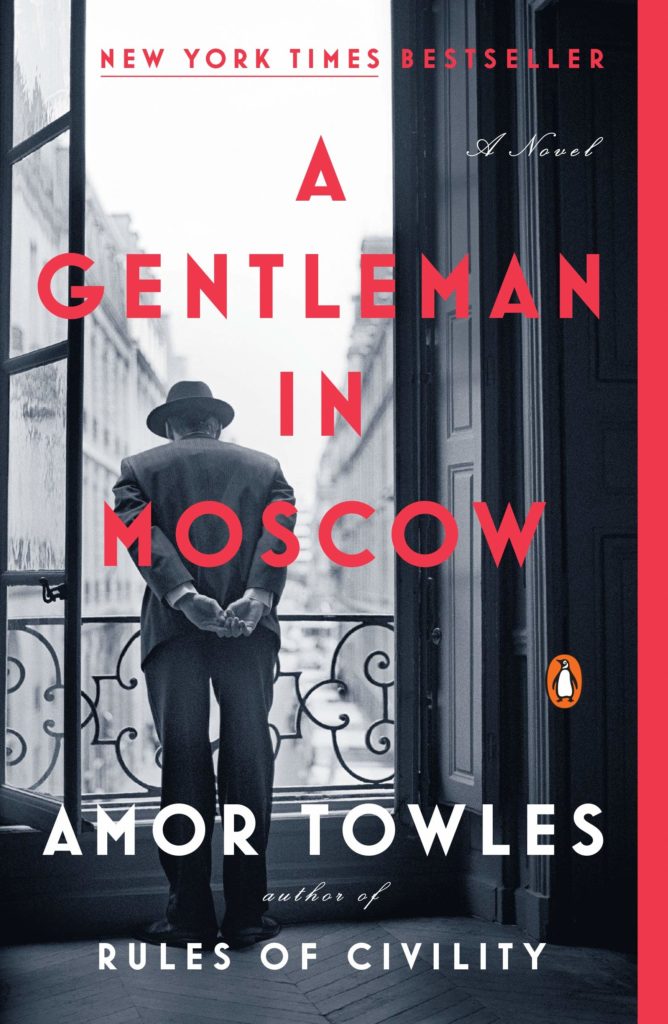
And now the ‘miss’ ~~
When we first entered this strange phase of our lives, I roamed my bookshelves – picking out books and planning my reading list for the duration. A Gentlemen in Moscow seemed like the perfect book — given we were all entering what appeared to be our own sort of house arrest.
In 1922, Count Alexander Rostov aged 33, is brought before a Bolshevik tribunal in Moscow. He is charged with being an unapologetic aristocrat — but because of his charm, and a carefully recited poem — instead of death, he is condemned to lifetime house arrest in his current place of residence: the Metropol Hotel. Removed from his suite and banished to a tiny room in the attic, the Count finds his material circumstances have been much reduced, but he faces his change in fortune philosophically.
The novel starts in a somewhat breezy style as we are introduced to the varied characters that move in and out of Rostov’s life as he is sequestered in the grand hotel. There’s a famous model, an overly bright little girl, and an officious general manager. I chuckled along as the Count’s days are spent anticipating his meals in the restaurant, laboriously making his way through The Essays of Montaigne, or anticipating his weekly haircut appointment.
It was initially charming to read about the Count’s interest in a bouillabaisse recipe, his fascination with wine, and his philosophical observations on the parade of people populating the hotel. But then, about two-thirds of the way through A Gentleman in Moscow, I realized that is all this book is about.
Don’t get me wrong, Mr. Towles is an excellent writer, there are some lovely passages which made me sigh with pleasure and re-read:
For what matters in life is not whether we receive a round of applause; what matters is whether we have the courage to venture forth despite the uncertainty of acclaim.
On those we love:
Every year that passed, it seemed a little more of her had slipped away; and I began to fear that one day I would come to forget her altogether. But the truth is: No matter how much time passes, those we have loved never slip away from us entirely.
Mr. Towles focuses almost entirely on the charming life of the Count locked in his grand Moscow hotel. I, however, kept wondering about what was unfolding outside the hotel’s doors. What about the tumultuous decades in Russian history? The plight of millions of Russians starving and being put to death by the Stalinist regime, not to mention two World Wars. That is the author’s choice, and I respect that, but this reader would have liked more historical reference. But that would have perhaps required a plot — and A Gentleman in Moscow is not a plot driven book – this is a lumbering (462 pages) character study about a character that I just didn’t find that interesting.
I put the book down, feeling like I, too, was imprisoned in the Hotel Metropol. Its premise held great promise, but it didn’t hold my attention. In a word, I got bored. My hair literally went gray waiting for something to happen (no recent hair appointments, not withstanding) ~~ reader, I gave up.
Annalisa Quinn’s review on NPR sums it up best:
“A Gentleman in Moscow is like a quipping, suavely charming dinner companion that you are also a little relieved to escape at the end of the meal.”
Other readers, whom I respect, have told me the novel is worth it for the ending alone – so I may start it up again – or (ssshhhh) jump to the last few chapters. Who knows? If I change my mind about A Gentleman in Moscow, I’ll be sure to let you know.
Until then, I’m going to find something to read where something actually happens.
Reading in Place My Favorite Books: Part 1
This last week (and whew, what a week, heh?) friends and readers have asked for book recommendations. That’s a tricky endeavor as everyone has unique reading tastes. As a substitute, I thought I’d tackle something I’ve been contemplating a long time — a list of my own favorite books. Before Book Barmy, I kept notebooks of all the books I’d read with my thoughts – so pulling together my Favorite Books list presented quite a job. But seeing as I’m not going anywhere – I’ll give it a shot. Perhaps you’ll want to pick and choose from these Book Barmy favorites for books to read while sheltering in place.
I know the libraries are closed in many areas, so if you want to buy any of these books — Please contact your local independent bookstore. They will happily take your order, personally ship your book(s), and will surely appreciate your distancing business right now. Find your local bookseller HERE
So, in no particular order and surely missing some – here we go. I will use a combination of my own notes and the book blurbs to give you the briefest but most complete synopsis of each book. Many of these books have a permanent place on my shelves, while others are long gone – happily given away to others who will enjoy them.
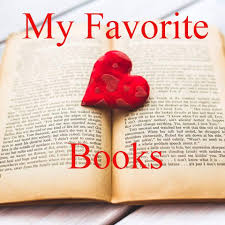
My Favorite Books – Part 1
Stones for Ibara, by Harriet Doerr
An excellent novel of cultural understanding and misunderstanding — stereotypes, adapting, and the power of grace. Richard and Sara Everton who have come to the small Mexican village of Ibarra to reopen a copper mine abandoned by Richard’s grandfather fifty years before. They have mortgaged, sold, borrowed, left friends and country, to settle in this remote spot; their plan is to live out their lives here, connected to the place and to each other. The two Americans, the only foreigners in Ibarra, live among people who both respect and misunderstand them. And gradually the villagers–at first enigmas to the Evertons–come to teach them much about life and fate.
Memoirs of a Geisha by Arthur Golden
This novel will absolutely transport you into the world of a Geisha. Nitta Sayuri tells the story of her life as a geisha. It begins in a poor fishing village in 1929, when, as a nine-year-old girl with unusual blue-gray eyes, she is taken from her home and sold into slavery to a renowned geisha house. We witness her transformation as she learns the rigorous arts of the geisha: dance and music; wearing a kimono; elaborate makeup and hair; pouring sake to reveal just a touch of inner wrist; competing with other geisha for men’s solicitude and the money that goes with it. We enter a world where appearances are paramount; where a girl’s virginity is auctioned to the highest bidder; where women are trained to beguile the most powerful men; and where love is scorned as illusion. It is a unique and absorbing novel —romantic, erotic, suspenseful—and, for me, completely unforgettable.
The Amazing Adventures of Kavalier & Clay by Michael Chabon
I never thought I would be interested in, let alone be besotted, by a book about two book artists in golden age of comic books — but this Pulitzer Prize winning novel just blew me away. A young escape artist and budding magician named Joe Kavalier arrives on the doorstep of his cousin, Sammy Clay. While the long shadow of Hitler falls across Europe, America is happily in thrall to the Golden Age of comic books, and Sammy is looking for a way to cash in on the craze. He finds the ideal partner in the aloof, artistically gifted Joe, and together they embark on an adventure that takes them deep into the heart of Manhattan, and the heart of old-fashioned American ambition. From the shared fears, dreams, and desires of two teenage boys, they spin comic book tales of the heroic, fascist-fighting Escapist and the beautiful, mysterious Luna Moth, the otherworldly mistress of the night. The writing is magic as they bring their comic book characters and stories to life — while also carving out their own vivid lives and amazing adventures of their own.
The Griffin and Sabine Series by Nick Bantock
These were hugely popular back in the 90’s and according to many critics, somewhat of a gimmick – but I adored this series of books and have hung onto them all these years later. Every so often, I’ll take them down and fall into what is the equivalent of adult pop-up books.
Griffin and Sabine are located on opposite ends of the earth — Griffin is a lonely artist in damp England, while Sabine is a native living on the sun-drenched island of Sicmon in the South Pacific. We meet them as they have just become pen pals and it is their correspondence back and forth which comprises the Griffin and Sabine books. Soul mates, they decide to meet, face to face. Their quest (and failures) to meet one another forms the backbone of these books. There are letters to open, postcards to read, handwriting to decipher, maps to study, all, for this reader — pure delight. You’re given the sensation of having stumbled upon a romantic mystery to which only you are privy – a private secret kept locked between the covers. The story is nothing much, but the discovery of it is exquisite. The art of these books is in their meticulous printing. There are actual envelopes glued into the text which you open to unfold an actual letter, postcards and beautiful illustrations– a true work of love on the part of Mr. Bantock and the publisher.
We Took to The Woods by Louise Dickinson Rich
Back as a teen in New Hampshire, we’d experience snow day school closures (much like today’s shelter in place). During one snow day, attracted by the jacket cover inviting me down a snowy path to a snug home in the pines, I picked up my mother’s copy of We Took to The Woods and happily wiled away the afternoon. Louise Dickinson Rich took to the woods of Maine with her husband. There they found their livelihood and raised a family in the remote backcountry of the Rangeley area of Maine. Ms. Rich made time after morning chores to write about their lives. This is not a biography, not even a memoir. Instead, in a very informal, conversational style, Rich answers key questions people have asked her about her life as a writer, a wife, and a mother deep in the north woods of Maine. One question per chapter: “Aren’t You Afraid? Don’t You Get Bored? How Do You Make A Living?” Her answers are candid, funny, detailed, and enlightening. We Took to the Woods is an adventure story, written with humor, but it also portrays a cherished dream realized in a full life. First published in 1942. I have since found my own copy in a used bookstore — but sadly, without my beloved original dust jacket.
The Magicians Assistant by Anne Patchett
Anne Patchett is one of my go-to authors but this has to be my favorite of her novels so far. When Parsifal, a handsome and charming magician, dies suddenly, his widow Sabine–who was also his faithful assistant for twenty years–learns that the family he claimed to have lost in a tragic accident is very much alive and well. She is left to unravel his secrets, and the adventure she embarks upon, from sunny Los Angeles to the bitter windswept plains of Nebraska, will work its own magic on her. A deliciously original story about love — in all its many forms.
My Life In France by Julia Child
This is THE book to read if you want to know about Julia Child. It’s fun, insightful, and delightfully ‘Julia’. Previously on Book Barmy HERE
84 Charing Cross Road by Helene Hanff
My list would be definitely incomplete without this treasure. I have purchased and given away many copies of this book — one of my top top favorites. Read more HERE
Okay, that’s enough for today. Don’t worry there’s plenty more — see Part 1 above.

I have to get back to a new book which I just started last night. It’s auditioning for this same list…
My Sister, the Serial Killer by Oyinkan Braithwaite
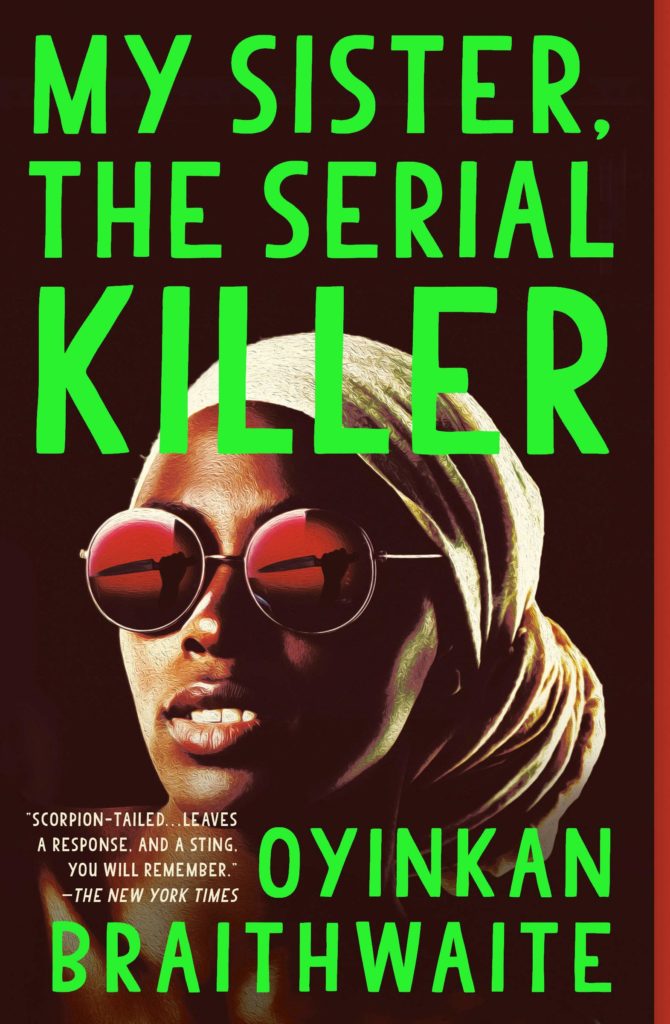
Today is my younger sister’s birthday. I bought her this book as a joke gift, never intending to read it.
But, then I read good reviews and learned that it was up for both the Booker and the Woman’s Prize. So, with the deadline of my sister’s birthday approaching, I opened it up the other week and dove in.
Korede’s sister Ayoola has the inconvenient habit of killing her boyfriends, the latest named Femi:
“Femi makes three, you know. Three and they label you a serial killer.”
My Sister the Serial Killer is written by a Nigerian novelist, and is set in Lagos, Nigeria. Korede’s younger sister Ayoola is many things: beautiful, self-involved, vain, everyone’s darling, and yes, a serial killer. Korede works as a nurse and lives at home with her mother and Ayoola. She is fastidious in her job, but doesn’t really have any friends due to keeping her sister’s secrets and cleaning up her messes, literally.
We begin in the middle of the action: Ayoola calls Korede in the middle of the night for help — she has stabbed her newest boyfriend. Out of necessity, Korede has become an expert at crime scene cleaning and evidence concealment. (Bleach is the best way to remove blood if you’re wondering or know your own serial killer.) Her life has become move the body, dispose of the body, clean up after the body, and hardest of all — stop her sister from carrying on with her social media posting as if nothing happened – and advising Ayoola to at least act sad about her latest ‘missing’ boyfriend.
But, everything changes when Ayoola sets her sites on a doctor Korede’s secretly in love with. Forced to sit back and watch in utter fear as Ayoola successfully flirts with him, Korede is faced with an inner battle to save the man she loves or to protect her sister.
Driven by her passion, and the fear she and her sister might get caught ~~ because, oops, Korede confessed everything to a patient who was in a coma but is now awake—Korede makes choices she never even imagined were possible.
The sisters’ story goes back and forth from their troubled childhood, to the present, to the near past, and onward. The story becomes deeper and more nuanced than one would first assume — as more history is revealed.
Nigerian culture is sprinkled throughout. There’s the heat, the food, and the traffic. The police are portrayed as corrupt and easily bribed. Even though their dead father was cruel and abusive, the mother and daughters are expected to host the annual lavish party to remember him.
My Sister, The Serial Killer isn’t a crime novel as such – there’s no mystery and no detection. It’s really the story of sisters and their relationship — the loyalty and the rivalry. It’s often darkly funny, but also tense, and unexpectedly poignant. There’s a scene where Ayoola is happily lapping ice cream while her (murdered) boyfriend’s sister is sobbing in grief — which stopped me cold.
This is a short little novel which you could read in one sitting, but you’ll want to linger, as it’s a very artfully written book. And, as an added bonus, you’ll learn how to clean a crime scene – just in case a family member goes rogue.
Happy Birthday to my wonderful sister, who, as far as I know, is not a serial killer.

Nine Perfect Strangers by Liane Moriarty
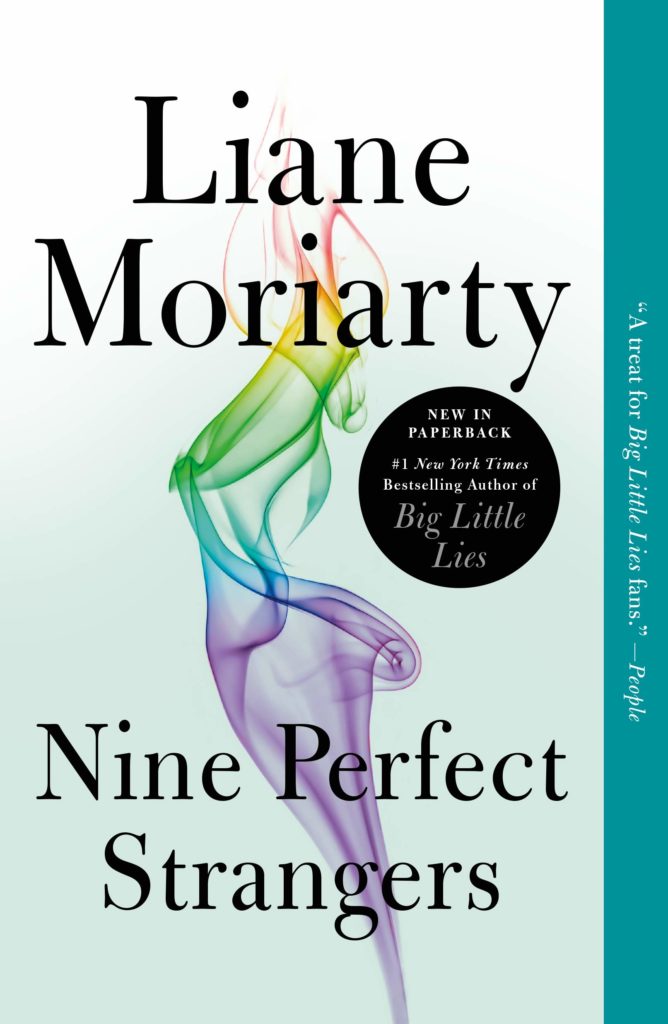
I didn’t intend to read this book — it wasn’t on my TBR list or even on my radar, but read inhale it, I did.
It was a really slow day at the bookstore and I was shelving fiction when I recognized Ms. Moriarty’s name from one of my favorite TV series Big Little Lies. This popular Australian author is known for writing a book a year, and I would categorize her novels as Chic-Lit Thriller (I just made that up).
I decided to randomly pick one of her titles to browse through it – just browse, mind you – there’s a ton of books at home to read, I told myself.
Seventy two hours later, I closed Nine Perfect Strangers and looked around blurry eyed, as if emerging from a cave.
The setting is Tranquillum House, a remote health resort in Australia and nine people have gathered to revive their lives — some to loose weight, some to gain mindfulness, and others just to get a fresh start. Frances Welty, a middle-aged, romance writer whose novel sales have been dwindling, arrives at the health resort with a bad back and a broken heart. She quickly realizes that most of her fellow guests don’t look to be in need of a health resort at all. The owner/director of the resort is odd, but charismatic, and Frances wonders if she should leave or stick it out. But stay she does and as she participates in the meditation, Tai Chi, and drinks the daily smoothies – Frances begins to feel a great deal better.
Several chapters go into the psyche and problems of each of the guests. We learn about their problems; marriage issues, a family recovering from the loss of a child, a has-been soccer player – all of them seeking health and bliss. But, the main focus is on Frances and Masha, the spa director. I laughed out loud at Frances and nodded in agreement at her attitude towards wellness and dieting. I had empathy for some of the characters and frustration with others, but overall I had anxiety on behalf of all of them — Tranquillum House is not all it appears to be. To paraphrase Bette Davis – fasten your seat belts, it’s going to be total nutter of a ride.
As the plot unspools, the transformative spa treatments start to take a dark turn. Masha gets weirder and the guests start to have strange interludes. I’ll stop there and won’t divulge any more. Just know there are lots of plot twists and some Agatha Christie-type scenes — all of which kept me turning the pages and turning the pages…
Nine Perfect Strangers is not high literary fiction, instead it has a ridiculous plot with some cliché characters, but it is also quirky, fun, and entertaining. The ending is a bit over the top, but the final chapters nicely tie up each characters’ story. I was on the edge of my seat throughout the book — Ms. Moriarty certainly can write a page turner and I now understand why she is a best selling author.
But now, afterwards, I think the experience was akin to eating cotton candy. Lots of fun — but why?
____________________________________________________________________________
I’ve read that Nicole Kidman bought the rights to Nine Perfect Strangers and is planning a series. Come to think of it, she would make the perfect Masha.




